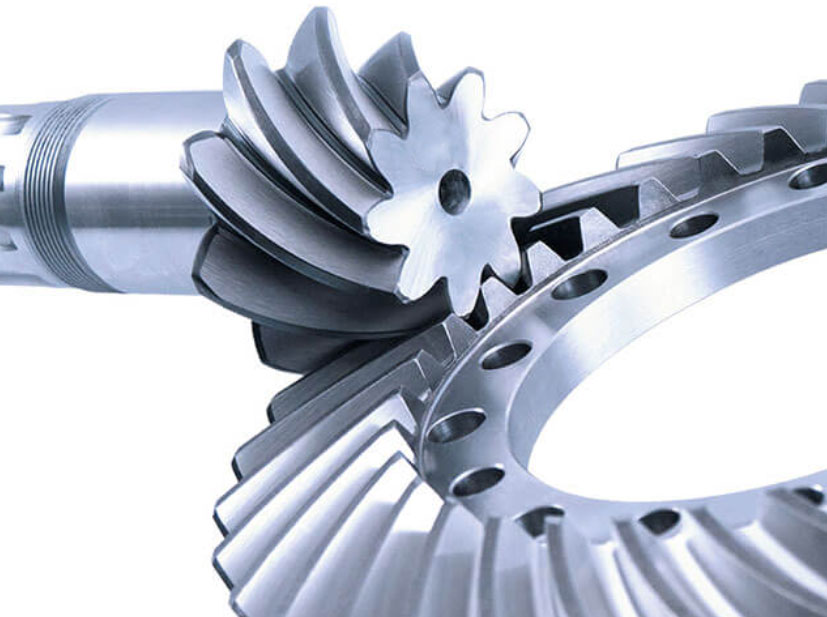
Spiral bevel gears are a type of bevel gears with helical teeth that are used to transmit power and motion between intersecting shafts. They have several unique features and design considerations that make them suitable for various applications. Here’s a fundamental guide to understanding the design and function of spiral bevel gears:
1. Definition and Terminology:
- Spiral bevel gears are a subtype of bevel gears, which are gears with intersecting shafts and tooth profiles cut on conical surfaces. The term “spiral” refers to the helical shape of the gear teeth, which are cut at an angle to the gear axis.
2. Helical Tooth Form:
- The key feature of spiral bevel gears is their helical tooth form. Unlike straight bevel gears with straight teeth, spiral bevel gears have teeth that are cut in a spiral pattern around the gear axis. This helical shape enables smoother and quieter meshing compared to straight-cut bevel gears.
3. Contact Pattern:
- During meshing, spiral bevel gears generate a complex contact pattern due to the helical tooth form. The contact pattern is typically a curved line, which extends along the gear teeth’s length as they mesh. Properly aligning and adjusting the gears ensures that the contact pattern is well-centered and evenly distributed for optimal load sharing.
4. Load Distribution:
- Spiral bevel gears distribute the transmitted load over multiple gear teeth, resulting in a more even load distribution compared to straight-cut bevel gears. This characteristic improves the gear’s load-carrying capacity and minimizes stress concentrations on individual teeth.
5. Benefits of Helical Teeth:
- The helical tooth form provides several benefits, including smooth and gradual tooth engagement, reduced impact and vibration during meshing, and enhanced power transmission efficiency.
6. Axial Thrust:
- Spiral bevel gears generate axial thrust due to their helical teeth. This axial thrust can be counteracted through various means, such as thrust bearings or preloading the gear mesh to balance the axial forces.
7. Manufacturing Considerations:
- The production of spiral bevel gears involves specialized cutting methods, such as Gleason or Klingelnberg gear cutting machines. The complex tooth geometry requires precise machining to achieve the desired gear performance.
8. Applications:
- Spiral bevel gears are commonly used in applications where intersecting shafts must transmit power at various angles. They are found in automotive differentials, aerospace gearboxes, marine propulsion systems, and various industrial machinery.
9. Lubrication and Noise Reduction:
- Proper lubrication is essential to reduce friction and wear in spiral bevel gears. Additionally, the helical tooth form contributes to reduced gear noise during operation, making them suitable for noise-sensitive applications.
Spiral bevel gears are versatile components used in various industries due to their efficiency, load-carrying capacity, and smooth operation. Their helical tooth form and careful design considerations make them valuable for transmitting motion and power between intersecting shafts while maintaining quiet and reliable gear operation.
